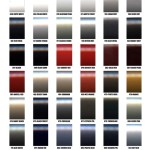How to Remove Deep Scratches From Plastic Car Interior
Car interiors, especially those made of plastic, are susceptible to scratches. These scratches can range from minor blemishes to deep gouges that can mar the appearance of your car. While minor scratches can often be addressed with simple cleaning and polishing, removing deep scratches requires a bit more effort. This article will provide a comprehensive guide to removing deep scratches from your car's plastic interior.
Assessing the Damage
Before embarking on any scratch removal process, it is crucial to accurately assess the severity of the damage. This initial step will dictate the appropriate tools and techniques required. A basic flashlight can be useful for examining the scratch. If the scratch is shallow and only affects the surface, it may be a candidate for polishing. However, if the scratch is deeply embedded and exposes the underlying plastic, more aggressive methods will be necessary.
Methods for Removing Deep Scratches
Several methods can be employed to remove deep scratches from plastic car interiors. Each has its own advantages and disadvantages, making it important to carefully consider the suitability of each option based on the specific scratch and the desired outcome.
1. Sanding and Polishing
Sanding and polishing is a common method for removing deep scratches from various materials, including plastic. It involves using progressively finer grit sandpaper to gradually remove the scratched area, followed by polishing to restore the surface's shine. This process should be undertaken with caution, as excessive sanding can damage the plastic. Here's a step-by-step guide:
- Gather Supplies: Fine-grit sandpaper (2000-grit or finer), a sanding block, a polishing compound, a microfiber cloth, and masking tape.
- Prepare the Area: Clean the scratched area thoroughly to remove any dirt or debris. Mask off the surrounding area to prevent accidental sanding.
- Sanding: Start with a fine-grit sandpaper and gently sand the scratch in a circular motion. Be careful not to apply too much pressure, as this could damage the plastic. Continue sanding with progressively finer grits if necessary.
- Polishing: Apply a small amount of polishing compound to a microfiber cloth. Rub the compound over the sanded area in a circular motion. Continue polishing until the scratch is no longer visible.
- Final Cleaning: Clean the area with a damp microfiber cloth to remove any residue.
2. Plastic Restorer
Plastic restorers are commercially available products designed specifically for repairing scratches and restoring the shine of plastic surfaces. These products typically contain a combination of abrasive agents and polishing compounds. They are often available in liquid or paste form and can be applied with a soft cloth or sponge.
- Apply Restorer: Apply a thin layer of plastic restorer to the scratched area. Follow the instructions provided by the manufacturer.
- Allow Time: Let the restorer sit for the recommended amount of time.
- Buff Away: Use a clean, soft cloth to buff the area gently. This will remove the excess restorer and reveal a smoother surface.
3. Heat Gun
A heat gun can be an effective method for removing deep scratches from plastic interiors. The heat from the gun melts the plastic slightly, allowing the scratch to be filled in. The heat gun method is not suitable for all types of plastic and should be used with caution. If you're not confident in your ability to use a heat gun, it's best to leave this method to a professional.
- Gather Supplies: A heat gun, a soft cloth, and a heat-resistant surface.
- Prepare the Area: Clean the scratch area thoroughly. Place the affected piece of plastic on a heat-resistant surface.
- Apply Heat: Slowly and carefully apply heat to the scratched area using the heat gun. Be sure to keep the gun moving constantly to avoid burning the plastic. The goal is to melt the plastic slightly around the scratch, not to completely melt it.
- Smooth Out the Scratch: Once the plastic has softened, use a soft cloth to gently smooth out the scratch.
- Cool Down: Allow the plastic to cool completely before applying any pressure.
4. Vinyl Wrap
Vinyl wrapping is a popular technique for covering imperfections on car interiors, including scratches. This method involves applying a thin sheet of vinyl over the scratched area, concealing the damage. Vinyl wraps are available in a multitude of colors and finishes, allowing for customization of your car's interior. Consult a professional for this option to ensure proper application.
When removing deep scratches from your car's plastic interior, it is important to choose a method that is suitable for the severity of the damage and the type of plastic. Always test any product or technique on an inconspicuous area before applying it to the visible surface. With patience and care, you can restore your car's plastic interior to its original condition, enhancing its appearance and value.

How To Fix Scratched Interior Panels In Your Car Holts

How To Remove A Scuff Mark Or Scratch From Your Car Dashboard
How To Remove Scratches From A Car S Interior Ifixit Repair Guide

Here S How You Can Get Rid Of Scratched Plastic In Your Car It So Easy The Sun
How To Remove Scratches From A Car S Interior Ifixit Repair Guide

How To Remove Scratches From Car Interior Fantastic Services
How To Remove Scratches From A Car S Interior Ifixit Repair Guide
Interior Plastic Scratch Repair Diy How To Honda Odyssey Forum
How To Remove Scratches From A Car S Interior Ifixit Repair Guide

Here S How You Remove Scratches From Your Car Interior Trim
Related Posts








